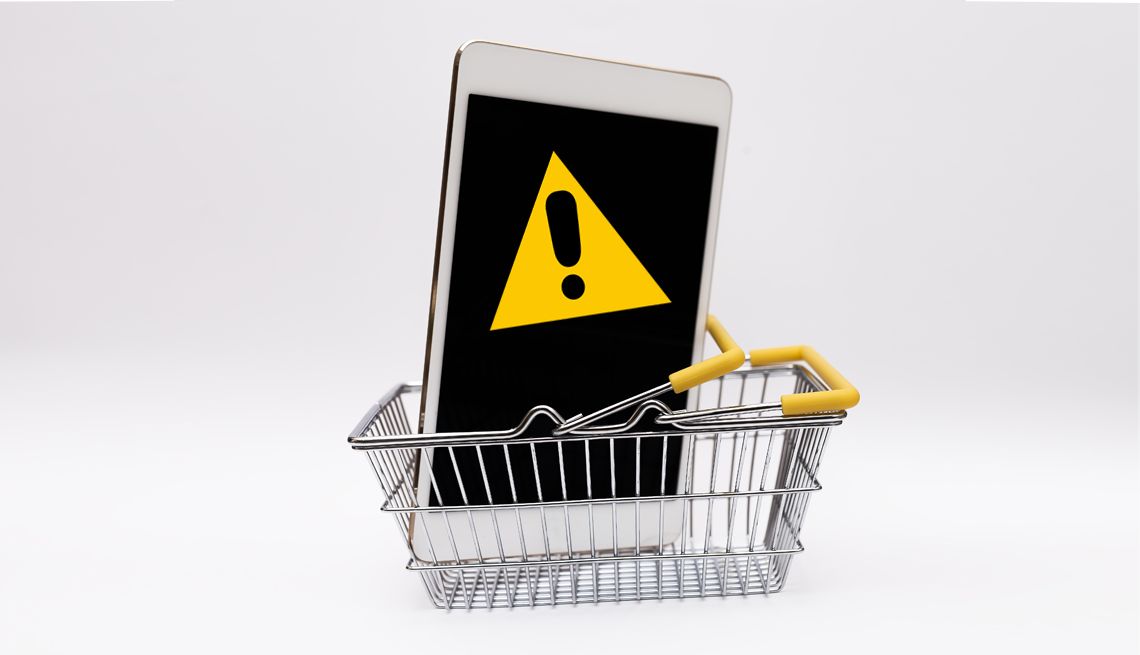AARP Hearing Center


Online shopping helps us avoid a trip to the store, but shoppers may not avoid a scam. “We consistently see that online shopping scams are among the top reported, particularly buying a product through an online ad,” says Kathy Stokes, director of fraud prevention at AARP’s Fraud Watch Network.
“A lot of it starts with passive scrolling through social media. We all do it,” says Melanie McGovern, spokesperson for the Better Business Bureau (BBB), who says that online shopping scams account for a third of the complaints on the BBB's Scam Tracker.
Many people keep payment information stored on their phone, so when they’re on the couch and see an ad for that perfect scarf, “It's easy to make a quick purchase without doing the due diligence — checking their website, BBB or (investigating) what the customer experience is with that company,” McGovern says.
As greater numbers of people turning to online to buy everything from food to fashion, it’s no surprise that the number of people who lost money to online shopping scams rose 25 percent year-over-year, according to Javelin Strategy & Research’s 2024 Identity Fraud Study. And it promises to get harder to detect by the use of generative AI says Jennifer Pitt, a cybersecurity and fraud analyst with Javelin.
“Criminals can use these tools to create perfect copycat websites of major retailers or create a site for a retailer that doesn’t exist,” says Stokes, “(AI) technology takes every red flag out of the equation — perfect grammar and contact information among them.”
How common online shopping scams work
Here are some common ways criminals try to get into your wallet.
Fake shopping websites. “Right now, websites are so easy to make look professional.” says Pitt. Some faux e-stores are invented from whole cloth, but many mimic trusted retailers, with familiar logos and a URL that’s easily mistaken for the real thing. To get you there, “They'll buy up every domain … that somebody could possibly mistype,” says Pitt. A simple slip of the keyboard takes you to a scammer’s website instead of the shop you intended to visit.
Knockoff products. Some copycats do deliver merchandise — shoddy knockoffs worth less than even the “discount” price advertised as a once-in-a-lifetime deal on, say, designer watches or boots. More often, you’ll wait in vain for your purchase to arrive.
Card declined scams. This is a new scam criminals have cooked up, says McGovern. You order something, put in your card information and you’re told that your card has been declined. If you put in information from another card to pay for the purchase, you’ll find that both cards have been charged.
Malware. You may have heard how scammers seed phony sites, apps or links in pop-up ads and email coupons with malware that infects your device and harvests personal information for use in identity theft. Unfortunately, according to Pitt, it’s still a problem. “That's why as fraud professionals we (say) ‘don't visit a website you're not familiar with.’ Anytime — even if you don't provide information — you click on that link you could essentially give a scammer access to your entire computer.”





























































More on Scams and Fraud
Chip Card Scam Turns Security Feature Into Security Risk
Your bank will never ask to ‘secure your account’ by taking the protective chip on your bank cardWhat to Do If You've Just Been Scammed
How one woman worked quickly — with help — to avoid being charged through PayPal
What to Know About the Latest Amazon-Impostor Scams
Be aware of the latest ways criminals use the company’s name to steal from consumers